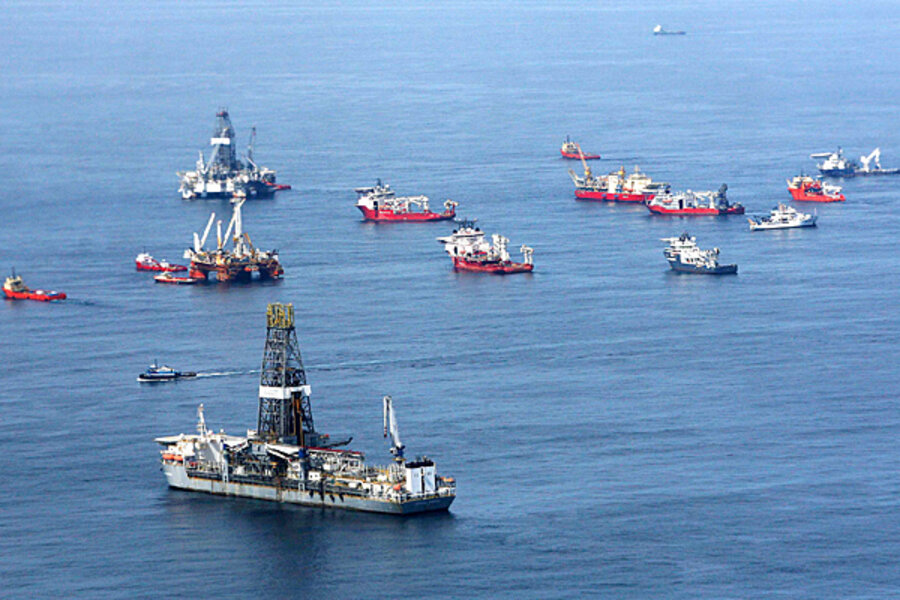Gulf oil spill: 'Static kill' vs. 'bottom kill' -- what's the difference?
Loading...
As early as Monday, BP will begin “static kill” – it’s opening gambit in the bid to seal the leaking Macondo well permanently.
Then about a week after static kill finishes, the relief well begun in May will at last punch through the bottom of the Macondo well and finish the sealing job in a “bottom kill.”
Thus, static kill and bottom kill will soon join the Gulf oil spill dictionary alongside “top kill,” “containment cap,” and “riser.”
But what are they, and why are both necessary?
The simplest answer is that both are not necessary, but with everything that has gone wrong at the Macondo well, BP is looking for as many redundancies as possible – seeking different means to try to increase the probability of success.
That means trying static kill this week, even though it is not strictly needed.
What is static kill?
Static kill is, in many respects, simply a reprise of top kill, which failed in late May. The idea is to force a heavy, synthetic fluid called drilling mud down the gullet of the well from valves on the blowout preventer device that sits atop the well.
Since oil is comparatively light, this should push the oil back down the well and into its subterranean reservoir. Once this is achieved, engineers will pour concrete into the well to seal it.
Why does BP expect this to work this time? Because the oil is now contained. The cap atop the well means BP can essentially get on top of the oil and force it down with a liquid piston.
In May, the fact that the well was still uncapped meant that BP could never get the pressure needed to cut off the flow of oil and push it down adequately. With the cap in place, BP expects this to be relatively easy.
Even if it works, however, the job won’t be finished.
What is bottom kill?
The primary relief well is now poised about 100 feet from the bottom of the Macondo well. Shortly after static kill is completed, drillers will begin the difficult process of trying to punch a hole in the Macondo well.
In the past on other blown-out wells, this has often taken several attempts since drillers can’t see 13,000 feet beneath the sea floor to where the well is. Instead, they must infer the location of the Macondo well and the correct intercept angle needed from a variety of data.
But if static kill has already sealed the well, why is this needed at all?
Two reasons:
First, static kill can only pour concrete into the steel pipe that runs from the wellhead to the reservoir, but there is a space between this pipe casing and the wall of the well bore. This space around the pipe is called the annulus. BP needs to seal the annulus, too.
That’s what it will do first, pouring in concrete.
Second, engineers will want confirmation that static kill worked. So they will punch through the pipe's steel casing to see what they find. If they find concrete, they’ll know static kill was successful and the job will be finished. If there’s no concrete, BP will pour more concrete into the pipe, killing the well for good.
If all goes according to plan, the process could be finished in about two weeks. But delays – even if they are routine ones – could push the end of the process much later.
Related:





